PG Diploma in IoT and Embedded Systems
100% JOB Assured with Globally Accepted Certificate
Intermediate
PG Diploma in IoT and Embedded Systems
100% JOB Assured with Globally Accepted Certificate
Overview
IoT Training - Master the Internet of Things and Revolutionize Your Career
Description
The IoT Training course is designed for those interested in learning about IoT principles and applications. By the end of the course, the student will be able to develop, implement, integrate, and test complex IoT software.
Cranes mentors in all essential disciplines to help engineers excel at designing and developing IoT-based applications that meet industry standards. We provide a wide range of hardware and software platforms, as well as programming languages.
Cranes Varsity is the best Internet of Things(IoT) Training Institute in Bangalore which, provides both Online and Offline training and offers services to aspiring individuals from training to placement as part of the IoT training program with over 100+ participants placed in various multinational companies including TATA Elxsi, UST Global, Genpact, Embedded UR, Symphony, Capgemini, Vodafone, NISSAN, Wipro, IBM, Tech Mahindra, Western Digital, Mphasis, Saffron, Verifone, ZF, HTC, LG Soft, Toshiba, Samsung, etc.
IoT – From Beginner to Expert Training
Cutting Edge IoT Training Course at Cranes Varsity is designed and continuously upgraded by the industrial experts associated with us for more than a decade. Participants will be groomed on Programming before they move to Embedded concepts. They will be working on Arduino / Raspberry boards. Additionally, participants will also learn about creating EdgeNode and Gateways in addition to working data communication. Five Months IoT Training Course will give comprehensive training on Programming, Embedded Hardware, and IoT concepts which will make the participant industry ready before he completes the course.
Internet of Things training will have returnable Hardware Kits, Lifetime Access to Study Materials, and In-house Campus Drive questions, which will help any aspirant to Crack any interviews. One to One Preplacement Assessment, Technical Mock, and HR Mock will ensure the participant will land in a prestigious IoT Position.
We also provide the best training on IoT Training Online in PAN India which will be helpful to build an exciting career in IT in the comfort of geographies.
At Cranes Varsity, your gateway to mastering the transformative world of the Internet of Things (IoT). Our comprehensive IoT Training program is designed to equip you with the knowledge, skills, and practical experience needed to revolutionize your career in this rapidly evolving field.
The Placement Assured Program for PG Diploma in IOT and Embedded Systems Course is specialized in Internet Things Of Course (IoT) Course ensures a seamless transition from learning to employment.
Throughout the program, you will receive comprehensive training in embedded systems which includes programming in C, Linux, Programming on Microcontroller, RTOS development, & in IOT Training specialization you will learn edge node and gateway development, IOT analytics, IOT security, deployment to cloud and their integration.
You will also have an understanding of SDLC, Devops and Verification & Validation methodologies. The curriculum focuses on industry-relevant skills, practical projects, and hands-on experience.
Join Our IoT Course in Bangalore and Shape the Future
The future is powered by IoT, and you can be a driving force in shaping that future. Join our IoT course in Bangalore and gain the skills, knowledge, and confidence to make an impact in the rapidly evolving world of IoT. Embrace the opportunities, unleash your potential, and embark on a journey of innovation.
This Internet of Things Course equips you with the necessary knowledge and skills to excel in a career as an embedded systems engineer or IoT specialist, creating innovative solutions for the rapidly expanding IoT landscape. Participants can use the benefit of Offline or can take IOT Training online.
After completing a PG Diploma in IOT and Embedded Systems course, you will possess a diverse range of capabilities. Firstly, you will have a solid understanding of embedded systems and their integration with IoT technology. You will be skilled in programming microcontrollers, sensor integration, and wireless communication protocols. Additionally, you will have expertise in developing IoT applications, data analytics, and cloud-based solutions. You will be capable of designing and implementing smart and connected systems for various industries, including home automation, healthcare, industrial automation, and more.
Our dedicated placement support, career development sessions, resume building, and interview preparation will enhance your employability. Our strong industry partnerships enable us to offer job placement assistance, connecting you with leading companies in the embedded and IoT sectors. We take pride in our high placement record and strive to help you launch a successful career in this exciting field.
The Placement Assured Program for PG Diploma in IOT and Embedded Systems Course at Cranes Varsity Bangalore ensures a seamless transition from learning to employment. Throughout the program, you will receive comprehensive training in embedded systems which includes programming in C, Linux, Programming on Microcontroller, RTOS development, & in IOT course specialization you will learn edge node and gateway development, IOT analytics, IOT security, deployment to cloud and their integration. You will also have an understanding of SDLC, Devops and Verification & Validation methodologies. You will also learn model development using Matlab and Simulink. The curriculum focuses on industry-relevant skills, practical projects, and hands-on experience.
After completing a PG Diploma in IOT and Embedded Systems course, you will possess a diverse range of capabilities. Firstly, you will have a solid understanding of embedded systems and their integration with IoT technology. You will be skilled in programming micro controllers, sensor integration, and wireless communication protocols. Additionally, you will have expertise in developing IoT applications, data analytics, and cloud-based solutions. You will be capable of designing and implementing smart and connected systems for various industries, including home automation, healthcare, industrial automation, and more. This diploma equips you with the necessary knowledge and skills to excel in a career as an embedded systems engineer or IoT specialist, creating innovative solutions for the rapidly expanding IoT landscape.
Our dedicated placement support, career development sessions, resume building, and interview preparation will enhance your employability. Our strong industry partnerships enable us to offer job placement assistance, connecting you with leading companies in the embedded and IoT sectors. We take pride in our high placement record and strive to help you launch a successful career in this exciting field.
The Placement Assured Program for PG Diploma in IOT and Embedded Systems at Cranes Varsity ensures a seamless transition from learning to employment. Throughout the program, you will receive comprehensive training in embedded systems which includes programming in C, Linux, Programming on Microcontroller, RTOS development, & in IOT you will learn edge node and gateway development, IOT analytics, IOT security, deployment to cloud and their integration. You will also have an understanding of SDLC, Devops and Verification & Validation methodologies. You will also learn model development using Matlab and Simulink. The curriculum focuses on industry-relevant skills, practical projects, and hands-on experience.
After completing a PG Diploma in Embedded and IoT Systems, you will possess a diverse range of capabilities. Firstly, you will have a solid understanding of embedded systems and their integration with IoT technology. You will be skilled in programming micro controllers, sensor integration, and wireless communication protocols. Additionally, you will have expertise in developing IoT applications, data analytics, and cloud-based solutions. You will be capable of designing and implementing smart and connected systems for various industries, including home automation, healthcare, industrial automation, and more. This diploma equips you with the necessary knowledge and skills to excel in a career as an embedded systems engineer or IoT specialist, creating innovative solutions for the rapidly expanding IoT landscape.
Our dedicated placement support, career development sessions, resume building, and interview preparation will enhance your employability. Our strong industry partnerships enable us to offer job placement assistance, connecting you with leading companies in the embedded and IoT sectors. We take pride in our high placement record and strive to help you launch a successful career in this exciting field.
IoT Training Course Modules
- Fundamentals of Electronics and Embedded Systems
- Programming in C following MISRA C
- Data Structures and Algorithms
- C++
- Linux System Prog and Socket Programming
- ARM 7 & Cortex M3 programming using Embedded C
- Programming using ARM Cortex M3 based MCUàSTM32F446
- Embedded Protocols – UART, SPI, I2C
- RTOS – Hands on using Free RTOS of Amazon
- Python Programming
- Architecture and Connectivity Model
- Edge Node Computing
- IoT Protocols – MQTT, AMQP, CoAP
- Gateway Computing
- Security Using Industrial IOT
- Embedded Project development using wired/wireless technology such as GPS, GSM, BLE, Wi-Fi and sensors
- Application development based on Data Structure (eg: Flood fund releasing data, cyber management systems, Bank management system, contact management system)
- Concurrent server to replicate a chat application using socket programming.
- Ecommerce Server backend using socket programming
- IoT based Advanced Security System
- Remote monitoring and controlling using IOT communication Protocol
- Ubuntu (Linux OS, with gcc compiler)
- Lpc2129, Keil Micro vision
Course Content
- Introduction to Embedded System
- Electrostatic Discharge Essentials
- Fundamentals of Booting for Embedded Processors
- Securing Embedded Systems
- SDLC – Development Life cycles and Frameworks
- Agile – an iterative and responsive software development methodology
- Development Bible
- Development and Operations
- Embedded Testing
- IoT Security
- Introduction to C
- Data types and Operators
- Conditional Statements
- Loop Control Structures
- Modular Programming using Functions
- Storage Classes
- Working with Multiple Files
- Preprocessor
- Conditional Inclusion
- Arrays
- Strings
- GDB Debugger
- Pointer Advanced Pointers
- Dynamic Memory Allocation
- Recursion
- Command Line Arguments
- Structures, Unions, typedef, enums
- Introduction to Data Structures Stacks and queus
- LinkedList
- Stack Implementation using array
- Queue Implementation using array
- Tree: Binay Search Tree
- Introduction to object oriented programming
- Procedural approach in C++
- Object oriented approach in C++
- Constructor and destructor
- Friends and operator overloading
- Generic programming
- Generalization
- Run time polymorphism
- Exception handling
- Introduction to the operating system
- Text Editors: Vim and gedit
- Finding Linux Documentation
- System Navigation command
- Manipulating Data
- Process Related commands Filtering
- Shell scripting
- Input and output
- Arithmetic Expression
- Decision making
- Looping Constructs
- Introduction to ARM Processor
- GPIO- General Purpose
- Input output
- LCD programming
- ADC Programming
- Timers
- Counters
- Building an executable
- Debugging & Tracing
- Memory Management
- Advanced Data Types
- Referencing data and function
- Working with registers
- Context management
- Linux fundamentals
- C library functions
- Coding practices
- Introduction to Python
- Python Data types and Conditions
- Control Statements
- Python Functions
- Default arguments
- Functions with variable number of args
- Scope of Variables
- Global Specifier
- Working with multiple files
- List and Tuple
- List Methods
- List Comprehension
- Map and filter functions String
- Set and Dictionary
- Fundamentals of testing Testing Throughout the Software Development Lifecycle
- Static Techniques
- Test techniques
- Test Infrastructure
- Test Monitoring & Control
- Embedded Specialization
- VIC- Interrupt programming
- KEYPAD programming DAC programming
- PWM programming
- PLL programming
- RTC and WDT programming
- UART programming
- I2C programming
- SPI programming
- Introduction to the device driver Char driver
- Advanced char driver operations
- Linux Kernel Build and static Linking
- Flow of time
- Interrupt handling
- Introduction to BBB Board & SOC
- AM335xFunctional block and overview
- U-BOOT Mechanism & BEAGLE BONEeMMC
- RT Systems–Architecture
- Introduction to tasks- Task internals, Task Scheduling, CAN layered architecture Real-Time Task Management
- State transition Diagramming Free RTOS Schedulers
- Inter task Synchronization
- Introduction to semaphores, types (Binary and Mutex)
- Programming with Semaphores
- Memory management
- Strategies of Memory Management Memory Allocation/De-allocation
- Inter task Communication Message Qs, Pipes, Shared Memory – pros &cons
- Introduction to Free RTOS Message Queues Programming with Message Queues
- Interrupt Handling Overview of Interrupts
- Overview of DevOps
- Version Control with Git
- Packaging, Release and Continuous Integration
- Automotive Specialization
- Object Oriented Programming
- Overloading Operator
- Inheritance
- Regular Expression
- Finding Patterns of Text
- Meta characters
- Testing Fundamentals
- Unit Testing with Pytest
- Working with JSON
- Decorators
- UI Development with Tkinter
- Containers
- Iterators
- UI development Mini Project
- Introduction to IOT and its Applications
- IOT communication Models
- IOT framework/platforms, IOT Hardware
- RaspberryPi3 Board Architecture and Configuration of Pi.
- Interfacing options on the Raspberry Pi.
- Interfacing peripherals, Interfacing LED and LDR, DHT11, LM35 sensors
- Interfacing 16 X 2 LCD and 7-segment Display
- Interfacing sensors and Pi Camera
- Interfacing Actuators, Relay, ADC
- IOT Connectivity Protocols – 05 days
- Serial Communication using UART. Interfacing Bluetooth, RFID.
- Basics of MQTT, COAP protocols
- Interfacing GPS and GSM modules with Raspberry
- Serial Communication using UART
- Interfacing Bluetooth, RFID
- Basics of MQTT
- COAP protocols
- Interfacing GPS and GSM modules with Raspberry
- Connecting to Cloud. Analyze and Visualize Data
- Start TLS process, SMTP server using Raspberry.
- Web Application using Flask Framework
- Remote control using Android Device
- Arduino and Node MCU interfacing
- Smart Gateway: smart home/smart car/smart grid
- Key Considerations and Challenges: Interoperability, Standards
- Secure Devices, Communication, Data & Cloud.
- Industrial IoT, Sensor Technology and Applications
- Tableau Introduction
- Traditional Visualization vs Tableau
- Tableau Architecture
- Working with sets
- Creating Groups Data types in Tableau
- Connect with Different Data sources
- Visual Analytics Parameter Filters
- Cards in Tableau Charts, Dash-board
- Joins and Data Blending
- Tableau Calculations using Functions
- Building Predictive Models
- Dynamic Dashboards and Stories
- Introduction to Embedded System
- Electrostatic Discharge Essentials
- Fundamentals of Booting for Embedded Processors
- Securing Embedded Systems
- SDLC – Development Life cycles and Frameworks
- Agile – an iterative and responsive software development methodology
- Development Bible
- Development and Operations
- Embedded Testing
- IoT Security
- Introduction to C
- Data types and Operators
- Conditional Statements
- Loop Control Structures
- Modular Programming using Functions
- Storage Classes
- Working with Multiple Files
- Preprocessor
- Conditional Inclusion
- Arrays
- Strings
- GDB Debugger
- Pointer Advanced Pointers
- Dynamic Memory Allocation
- Recursion Command Line
- Arguments Structures, Unions, typedef, enums
- Introduction to Data Structures Stacks and queus
- Linked-List
- Stack Implementation using array
- Queue Implementation using array
- Tree: Binay Search Tree
- Introduction to object oriented programming
- Procedural approach in C++
- Object oriented approach in C++
- Constructor and destructor
- Friends and operator overloading
- Generic programming
- Generalization
- Run time polymorphism
- Exception handling
- Introduction to the operating system
- Text Editors: Vim and gedit
- Finding Linux Documentation
- System Navigation command
- Manipulating Data
- Process Related commands Filtering
- Shell scripting
- Input and output
- Arithmetic Expression
- Decision making
- Looping Constructs
- Introduction to ARM Processor
- GPIO- General Purpose
- Input output
- LCD programming
- ADC Programming
- Timers
- Counters
- Building an executable
- Debugging & Tracing
- Memory Management
- Advanced Data Types
- Referencing data and function
- Working with registers
- Context management
- Linux fundamentals
- C library functions
- Coding practices
- Introduction to Python
- Python Data types and Conditions
- Control Statements
- Python Functions
- Default arguments
- Functions with variable number of args
- Scope of Variables
- Global Specifier
- Working with multiple files
- List and Tuple
- List Methods
- List Comprehension
- Map and filter functions String
- Set and Dictionary
- Fundamentals of testing Testing Throughout the Software Development Lifecycle
- Static Techniques
- Test techniques
- Test Infrastructure
- Test Monitoring & Control
- Embedded Specialization
- VIC- Interrupt programming
- KEYPAD programming DAC programming
- PWM programming
- PLL programming
- RTC and WDT programming
- UART programming
- I2C programming
- SPI programming
- Introduction to the device driver Char driver
- Advanced char driver operations
- Linux Kernel Build and static Linking
- Flow of time
- Interrupt handling
- Introduction to BBB Board & SOC
- AM335xFunctional block and overview
- U-BOOT Mechanism & BEAGLE BONEeMMC
- RT Systems–Architecture
- Introduction to tasks- Task internals, Task Scheduling, CAN layered architecture Real-Time Task Management
- State transition Diagramming Free RTOS Schedulers
- Inter task Synchronization
- Introduction to semaphores, types (Binary and Mutex)
- Programming with Semaphores
- Memory management
- Strategies of Memory Management Memory Allocation/De-allocation
- Inter task Communication Message Qs, Pipes, Shared Memory – pros &cons
- Introduction to Free RTOS Message Queues Programming with Message Queues
- Interrupt Handling Overview of Interrupts
- Overview of DevOps
- Version Control with Git
- Packaging, Release and Continuous Integration
- Automotive Specialization
- Automotive Systems Overview
- Automotive System Design with CAN and Without CAN
- ECU Design Automotive Microcontroller.
- CAN Bus levels, CAN Communication Principle CAN layer architecture.
- NRZ Coding, Bit Stuffing
- CAN network Design.
- CAN Frame
- Timing and Synchronization CRC Calculation CSMA-CD, CAN Arbitration
- CAN Frame Analysis Using CAN- BUSMASTER Analyzer AUTOSAR Layer Architecture
- Introduction to MATLAB- Data Types, Addressing Techniques,
- linear Equation Creating and manipulating matrices- Data Visualization-2D and 3D plots, Digital image processing,
- Programming in MATLAB
- Graphical User Interface
- Introduction to Model-Based Design
- Logic Driven Modeling Finite state machines
- Introduction to Sims cape
- Introduction to Embedded System
- Electrostatic Discharge Essentials
- Fundamentals of Booting for Embedded Processors
- Securing Embedded Systems
- SDLC – Development Life cycles and Frameworks
- Agile – an iterative and responsive software development methodology
- Development Bible
- Development and Operations
- Embedded Testing
- IoT Security
- Introduction to C
- Data types and Operators
- Conditional Statements
- Loop Control Structures
- Modular Programming using Functions
- Storage Classes
- Working with Multiple Files
- Preprocessor
- Conditional Inclusion
- Arrays
- Strings
- GDB Debugger
- Introduction to object oriented programming
- Procedural approach in C++
- Object oriented approach in C++
- Constructor and destructor
- Friends and operator overloading
- Generic programming
- Generalization
- Run time polymorphism
- Exception handling
- Introduction to the operating system
- Text Editors: Vim and gedit
- Finding Linux Documentation
- System Navigation command
- Manipulating Data
- Process Related commands Filtering
- Shell scripting
- Input and output
- Arithmetic Expression
- Decision making
- Looping Constructs
- Introduction to ARM Processor
- GPIO- General Purpose
- Input output
- LCD programming
- ADC Programming
- Timers
- Counters
- Building an executable
- Debugging & Tracing
- Memory Management
- Advanced Data Types
- Referencing data and function
- Working with registers
- Context management
- Linux fundamentals
- C library functions
- Coding practices
- Introduction to Python
- Python Data types and Conditions
- Control Statements
- Python Functions
- Default arguments
- Functions with variable number of args
- Scope of Variables
- Global Specifier
- Working with multiple files
- List and Tuple
- List Methods
- List Comprehension
- Map and filter functions String
- Set and Dictionary
- Fundamentals of testing Testing Throughout the Software Development Lifecycle
- Static Techniques
- Test techniques
- Test Infrastructure
- Test Monitoring & Control
- Embedded Specialization
- VIC- Interrupt programming
- KEYPAD programming DAC programming
- PWM programming
- PLL programming
- RTC and WDT programming
- UART programming
- I2C programming
- SPI programming
- Introduction to STM32F411 RE Microcontroller
- GPIO Programming on STM32
- UART
- Programming on STM32
- Timer Programming on STM32
- Interrupt Programming on STM32
- Introduction to the device driver Char driver
- Advanced char driver operations
- Linux Kernel Build and static Linking
- Flow of time
- Interrupt handling
- Introduction to BBB Board & SOC
- AM335xFunctional block and overview
- U-BOOT Mechanism & BEAGLE BONEeMMC
- RT Systems–Architecture
- Introduction to tasks- Task internals, Task Scheduling, CAN layered architecture Real-Time Task Management
- State transition Diagramming Free RTOS Schedulers
- Inter task Synchronization
- Introduction to semaphores, types (Binary and Mutex)
- Programming with Semaphores
- Memory management
- Strategies of Memory Management Memory Allocation/De-allocation
- Inter task Communication Message Qs, Pipes, Shared Memory – pros &cons
- Introduction to Free RTOS Message Queues Programming with Message Queues
- Interrupt Handling Overview of Interrupts
- Overview of DevOps
- Version Control with Git
- Packaging, Release and Continuous Integration
- Automotive Specialization
- Object Oriented Programming
- Overloading Operator
- Inheritance
- Regular Expression
- Finding Patterns of Text
- Meta characters
- Testing Fundamentals
- Unit Testing with Pytest
- Working with JSON
- Decorators
- UI Development with Tkinter
- Containers
- Iterators
- UI development Mini Project
- Introduction to IOT and its Applications
- IOT communication Models
- IOT framework/platforms, IOT Hardware
- RaspberryPi3 Board Architecture and Configuration of Pi.
- Interfacing options on the Raspberry Pi.
- Interfacing peripherals, Interfacing LED and LDR, DHT11, LM35 sensors
- Interfacing 16 X 2 LCD and 7-segment Display
- Interfacing sensors and Pi Camera
- Interfacing Actuators, Relay, ADC
- IOT Connectivity Protocols – 05 days
- Serial Communication using UART. Interfacing Bluetooth, RFID.
- Basics of MQTT, COAP protocols
- Interfacing GPS and GSM modules with Raspberry
- Connecting to Cloud. Analyze and Visualize Data
- Start TLS process, SMTP server using Raspberry.
- Web Application using Flask Framework
- Remote control using Android Device
- Arduino and Node MCU interfacing
- Smart Gateway: smart home/smart car/smart grid
- Key Considerations and Challenges: Interoperability, Standards
- Secure Devices, Communication, Data & Cloud.
- Industrial IoT, Sensor Technology and Applications
- Tableau Introduction
- Traditional Visualization vs Tableau
- Tableau Architecture
- Working with sets
- Creating Groups Data types in Tableau
- Connect with Different Data sources
- Visual Analytics Parameter Filters
- Cards in Tableau Charts, Dash-board
- Joins and Data Blending
- Tableau Calculations using Functions
- Building Predictive Models
- Dynamic Dashboards and Stories
- Introduction to Embedded System
- Electrostatic Discharge Essentials
- Fundamentals of Booting for Embedded Processors
- Securing Embedded Systems
- SDLC – Development Life cycles and Frameworks
- Agile – an iterative and responsive software development methodology
- Development Bible
- Development and Operations
- Embedded Testing
- IoT Security
- Introduction to C
- Data types and Operators
- Conditional Statements
- Loop Control Structures
- Modular Programming using Functions
- Storage Classes
- Working with Multiple Files
- Preprocessor
- Conditional Inclusion
- Arrays
- Strings
- GDB Debugger
- Introduction to the operating system
- Text Editors: Vim and gedit
- Finding Linux Documentation
- System Navigation command
- Manipulating Data
- Process Related commands Filtering
- Shell scripting
- Input and output
- Arithmetic Expression
- Decision making
- Looping Constructs
- Introduction to ARM Processor
- GPIO- General Purpose
- Input output
- LCD programming
- ADC Programming
- Timers
- Counters
- Building an executable
- Debugging & Tracing
- Memory Management
- Advanced Data Types
- Referencing data and function
- Working with registers
- Context management
- Linux fundamentals
- C library functions
- Coding practices
- Introduction to Python
- Python Data types and Conditions
- Control Statements
- Python Functions
- Default arguments
- Functions with variable number of args
- Scope of Variables
- Global Specifier
- Working with multiple files
- List and Tuple
- List Methods
- List Comprehension
- Map and filter functions String
- Set and Dictionary
- Fundamentals of testing Testing Throughout the Software Development Lifecycle
- Static Techniques
- Test techniques
- Test Infrastructure
- Test Monitoring & Control
- Embedded Specialization
- VIC- Interrupt programming
- KEYPAD programming DAC programming
- PWM programming
- PLL programming
- RTC and WDT programming
- UART programming
- I2C programming
- SPI programming
- Introduction to STM32F411 RE Microcontroller
- GPIO Programming on STM32
- UART
- Programming on STM32
- Timer Programming on STM32
- Interrupt Programming on STM32
- Introduction to the device driver Char driver
- Advanced char driver operations
- Linux Kernel Build and static Linking
- Flow of time
- Interrupt handling
- Introduction to BBB Board & SOC
- AM335xFunctional block and overview
- U-BOOT Mechanism & BEAGLE BONEeMMC
- RT Systems–Architecture
- Introduction to tasks- Task internals, Task Scheduling, CAN layered architecture Real-Time Task Management
- State transition Diagramming Free RTOS Schedulers
- Inter task Synchronization
- Introduction to semaphores, types (Binary and Mutex)
- Programming with Semaphores
- Memory management
- Strategies of Memory Management Memory Allocation/De-allocation
- Inter task Communication Message Qs, Pipes, Shared Memory – pros &cons
- Introduction to Free RTOS Message Queues Programming with Message Queues
- Interrupt Handling Overview of Interrupts
- Overview of DevOps
- Version Control with Git
- Packaging, Release and Continuous Integration
- Automotive Specialization
- Object Oriented Programming
- Overloading Operator
- Inheritance
- Regular Expression
- Finding Patterns of Text
- Meta characters
- Testing Fundamentals
- Unit Testing with Pytest
- Working with JSON
- Decorators
- UI Development with Tkinter
- Containers
- Iterators
- UI development Mini Project
- Introduction to IOT and its Applications
- IOT communication Models
- IOT framework/platforms, IOT Hardware
- RaspberryPi3 Board Architecture and Configuration of Pi.
- Interfacing options on the Raspberry Pi.
- Interfacing peripherals, Interfacing LED and LDR, DHT11, LM35 sensors
- Interfacing 16 X 2 LCD and 7-segment Display
- Interfacing sensors and Pi Camera Interfacing Actuators, Relay, ADC
- IOT Connectivity Protocols – 05 days
- Serial Communication using UART. Interfacing Bluetooth, RFID.
- Basics of MQTT, COAP protocols
- Interfacing GPS and GSM modules with Raspberry
- Connecting to Cloud. Analyze and Visualize Data
- Start TLS process, SMTP server using Raspberry.
- Web Application using Flask Framework
- Remote control using Android Device
- Arduino and Node MCU interfacing
- Smart Gateway: smart home/smart car/smart grid
- Key Considerations and Challenges: Interoperability, Standards
- Secure Devices, Communication, Data & Cloud.
- Industrial IoT, Sensor Technology and Applications
- Tableau Introduction
- Traditional Visualization vs Tableau Tableau Architecture
- Working with sets
- Creating Groups Data types in Tableau
- Connect with Different Data sources
- Visual Analytics Parameter Filters
- Cards in Tableau Charts, Dash-board
- Joins and Data Blending
- Tableau Calculations using Functions
- Building Predictive Models
- Dynamic Dashboards and Stories
Generic:
Electronics and Embedded Hardware Familiarization – 08 Days
- Introduction to Embedded System
- Securing Embedded Systems
- Electrostatic Discharge Essentials
- Fundamentals of Booting for Embedded Processors
SDLC – 04 Days
- SDLC – Development Life cycles and Frameworks
- Development and Operations
- Agile – an iterative and responsive software development methodology
- Embedded Testing
- Development Bible
- IoT Security
Programming in C following MISRA C – 12 days
- Introduction to C
- Loop Control Structures
- Working with Multiple Files
- Arrays
- Data types and Operators
- Modular Programming using Functions
- Preprocessor
- Strings
- Conditional Statements
- Storage Classes
- Conditional Inclusion
- GDB Debugger
Linux Commands & Shell Scripting – 04 days
- Introduction to the operating system
- System Navigation command
- Shell scripting Input and output
- Text Editors: Vim and gedit
- Manipulating Data
- Arithmetic Expression
- Finding Linux Documentation
- Process Related commands Filtering
- Decision making Looping Constructs
LPC/ARM Cortex M3 Programming using Embedded C – 04 days
- Introduction to ARM Processor
- ADC Programming
- GPIO- General Purpose Input Output
- Timers
- LCD programming
- Counters
System Programming using C – 08 Days
- Building an executable
- Advanced Data Types
- Context management
- Coding practices
- Debugging & Tracing
- Referencing data and function
- Linux fundamentals
- Memory Management
- Working with registers
- C library functions
Python Programming – 04 days
- Introduction to Python
- Python Functions
- Scope of Variables
- List and Tuple
- Map and filter functions
- ADC Programming
- Python Data types and Conditions
- Default arguments
- Global Specifier
- List Methods
- String
- Timers
- Control Statements
- Functions with variable number of args
- Working with multiple files
- List Comprehension
- Set and Dictionary
- Counters
Verification & Validation -04 days
- Fundamentals of testing
- Test techniques
- Testing Throughout the Software Development Lifecycle
- Test Infrastructure
- Static Techniques
- Test Monitoring & Control
Embedded Specialization:
ARM Bare Metal Programming (ARM Cortex)- 10 Days
- VIC- Interrupt programming
- PWM programming
- UART programming
- KEYPAD programming
- PLL programming
- I2C programming
- DAC programming
- RTC and WDT programming
- SPI programming
ARM Bare Metal Programming (STM) – 05 Days
- Introduction to STM32F411 RE Microcontroller
- Timer Programming on STM32
- GPIO Programming on STM32
- Interrupt Programming on STM32
- UART Programming on STM32
DevOps for Embedded Software Development – 04 days
- Overview of DevOps
- Version Control with Git
- Packaging, Release and Continuous Integration
IoT Specialization:
Advanced Python and Unit Testing- 08 Days
- Object Oriented Programming
- Regular Expression
- Testing Fundamentals
- Decorators
- Iterators
- Overloading Operator
- Finding Patterns of Text
- Unit Testing with Pytest
- UI Development with Tkinter
- UI development Mini Project
- Inheritance
- Meta characters
- Working with JSON
- Containers
IOT Connectivity Protocols – 05 days
- Serial Communication using UART. Interfacing Bluetooth, RFID.
- Basics of MQTT, COAP protocols
- Interfacing GPS and GSM modules with Raspberry
IOT cloud data processing and analysis – 06 days
- Connecting to Cloud. Analyze and Visualize Data
- Remote control using Android Device
- Key Considerations and Challenges: Interoperability, Standards
- Start TLS process, SMTP server using Raspberry.
- Arduino and Node MCU interfacing
- Secure Devices, Communication, Data & Cloud.
- Web Application using Flask Framework
- Smart Gateway: smart home/smart car/smart grid
- Industrial IoT, Sensor Technology and Applications
Data Analysis and Visualization using Tableau – 06 days
- Tableau Introduction
- Working with sets
- Connect with Different Data sources
- Cards in Tableau
- Tableau Calculations using Functions
- Traditional Visualization vs Tableau
- Creating Groups
- Visual Analytics
- Charts, Dash-board
- Building Predictive Models
- Tableau Architecture
- Data types in Tableau
- Parameter Filters
- Joins and Data Blending
- Dynamic Dashboards and Stories
Hiring Partners


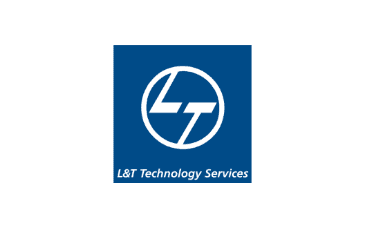
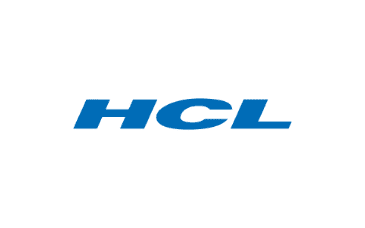

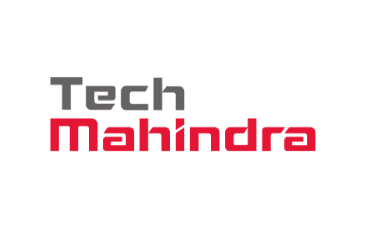
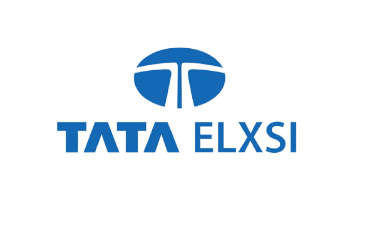



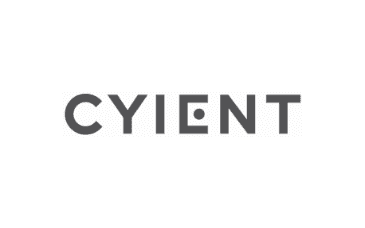

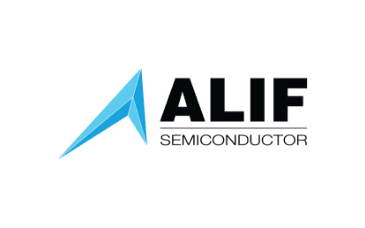


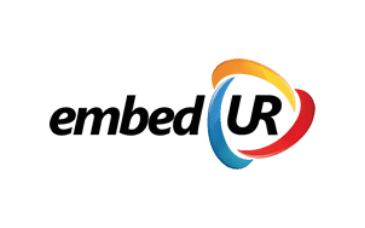

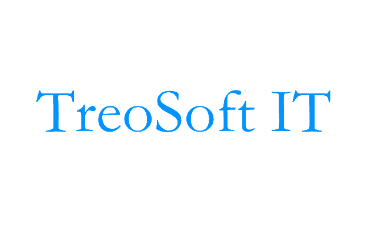
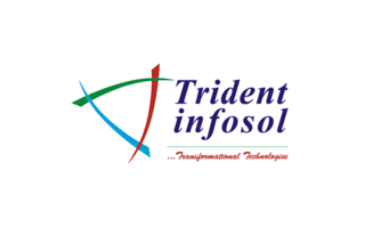

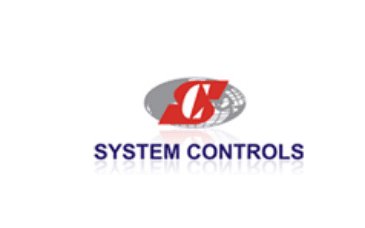
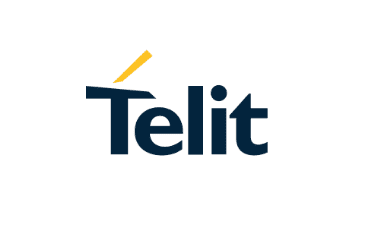


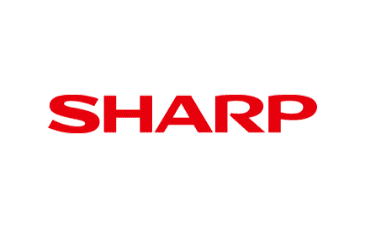


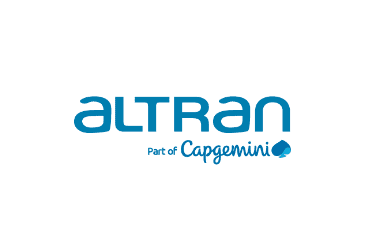
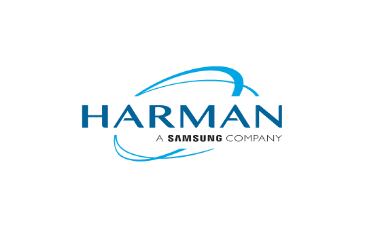

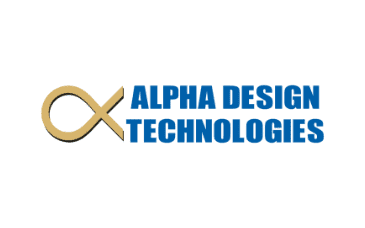


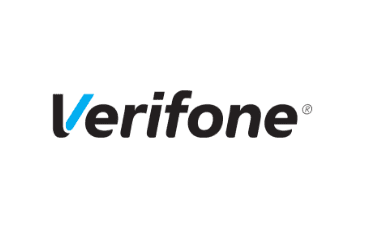


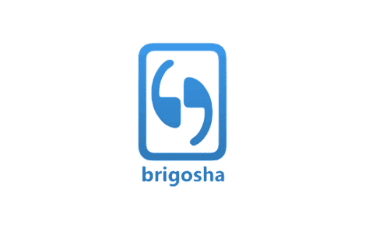


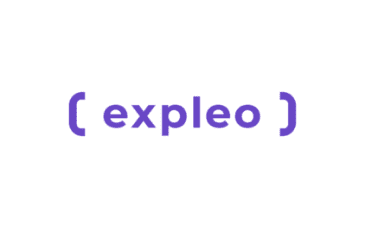
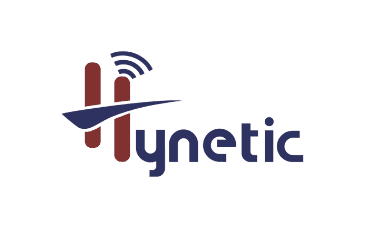
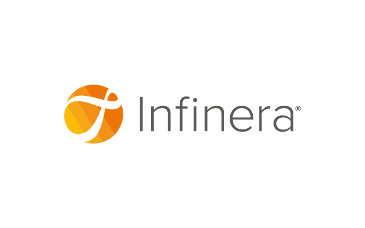
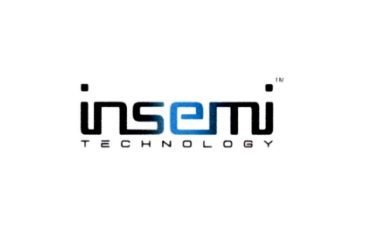


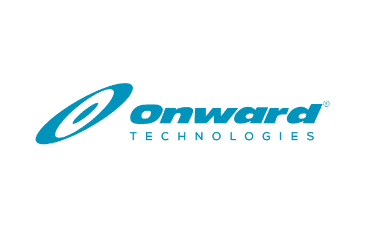

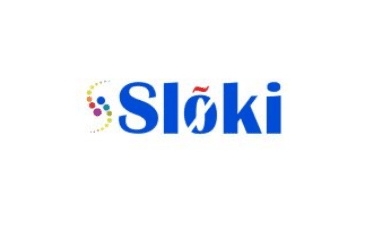
IOT Training FAQs
What is IoT Training?
IoT – Internet of Things is a network of physical objects that are connected through sensors, software, and other technologies. Dishwashers, Refrigerators, smart TVs, Smart Watches, Smart homes, Smart Parking systems, Smart cities, Smart vehicles, etc are the best examples for IoT.
As the world in moving towards industry 4.0, IoT is helping companies to increase efficiency, reduce errors, Predictive maintenance and reducing the overall cost.
IoT training should have essential elements like, Understanding of IoT, Hardware, Software components, and protocols. In addition to theses, the IoT training should also have sending and extracting data from cloud for any business analysis. These are all required for any individual who aspite to be any IoT Architect.
Will I get a certificate after completion of the IoT Course?
Yes, Cranes Varsity Provides an IoT Course Completion Certificate which is accepted globally.
What is the scope of IoT as a career?
Here, you can find a whole lot of career paths. From PCB design & manufacture, firmware engineering, and thing engineering to complete product lifecycle management, mechanical engineers and sign conditioning — there are so many options to choose from!
What is IoT in Embedded Systems?
IoT stands for Internet of Things. IoT in embedded systems means designing, Developing, Implementing Embedded Systems, and connecting to the Internet network. And these IoT Embedded Systems send a large amount of real-time data through sensors. This real-time information helps for Monitoring, Analyzing, Tracking, and many more.
Who can take up the IoT Training / Certified IOT Course?
Students with a background of BE / B.Tech in ECE / CSE/ISE/Electrical & Electronics / Biomedical / Instrumentation / Msc Electronics and any other relevant streams.
Is it worth learning IOT Embedded Systems?
There are tremendous opportunities for Certified IOT Professionals in the Industry (Internet of Things). Embedded systems will play an important role in the Internet of Things (IoT) due to their unique features like real-time computing, low power consumption, low maintenance, and high availability are a few key factors of IoT. So be an IOT-ready developer.
Why should I join IOT Training in Cranes Varsity, Bangalore?
Cranes Varsity is the Best IOT Training Institute in Bangalore, as we are a pioneer in Technical Training & Education services with over 20 years of acclaimed expertise. Check the following fact sheet about Cranes Varsity.
- Over 20 years of qualified training experience
- 100% Placement till students are placed
- Trained over 1 million engineering graduates
- 500+ companies with over 50,000+ Cranes Alumnae
- State of the Art Infrastructure with well Equipped Labs
- 20000+ Corporate & Defence professional trained
- Partnership with Global Leaders
- 40+ Experienced Trainers & Consultants Equipped with Skills of Industry Demand.
Testimonials
I have completed my B. TECH in the ECE branch. There were very less opportunities at my college. Hence, I joined Cranes Varsity. The faculties are very good. They taught us very well. cranes Varsity, a lot of companies came for the Campus Drive. I got 4-5 opportunities at top companies but I chose to work with Mphasis. Cranes Varsity is a very good institute. Thank you Cranes Varsity.
I completed my engineering in Electronics and Communication Engineering in 2021. I always wanted to work in the core domain. Right after my graduation, I joined Cranes Varsity for PG Diploma in IoT and Embedded systems. Internet of Things Course is very perfect for anyone who wants to enter into the core domain. The trainers have excellent knowledge and are very friendly, they teach us each and every concept very well which has helped me to gain the knowledge. With the efforts of the team atCranes Varsity, I was able to get placed in TosallIndia. Thank you so much to everyone who had helped me in all possible ways.I am grateful to Cranes Varsity.
I Completed my B. Tech in EEE in Hyderabad and I joined Cranes Varsity. I was well assisted by Cranes Varsity. The trainers are are very helpful and responsive. They explain things well. I liked it which made me join IoT Course Online. I was able to do everything in my own time and it was easier for me to complete all the assignments. CRANES VARSITY gives 100 % placement assistance. I got placed in ZF India.
I am Yashaswini completed my engineering in GMIT institute of technology, Davanagere. After completing I came to know about career labs they came to our college and referred to Cranes Varsity. At Cranes Varsity I have improved my skills in Embedded and IoT Training. It is one of the best institutes to learn embedded skills. I am thankful to Cranes Varsity. I got placed in Thunder Soft company and thank you for all the trainers who trained me in this institute thank you.
I completed my graduation in Electronics and Communication Engineering in 2020.I joined Cranes Varsity in February 2021 and started PG Diploma in Embedded and IoT Course. The training was very good. Basic concepts were taught thoroughly and every module had some assignments that make us gain more control of the module. Here at Cranes Varsity, the faculties covered many industry-related topics and I gained a good amount of knowledge on the modules like Linux,C, C++, Arm, CAN, etc. Cranes Varsity provided many placement opportunities; I got placed in Tech Mahindra. I would like to thank Cranes Varsity and their trainers for helping me to start my career in a better way.
I have completed PG Diploma in Embedded and IoT Course and also got placed in a reputed company with a very good package. It was a great learning experience, and I had a very good and helpful interactive session with the trainers. The content and the material which was provided were very helpful in learning new technology. Thank you Cranes Varsity for making it possible for me. Thank you so much.I got placed in Mphasis
Abhishek Seth

Rahul Vp

Karthik Ananth

Yashaswini .M Yashu

Madhu Sudhan Sai

Shankar N




